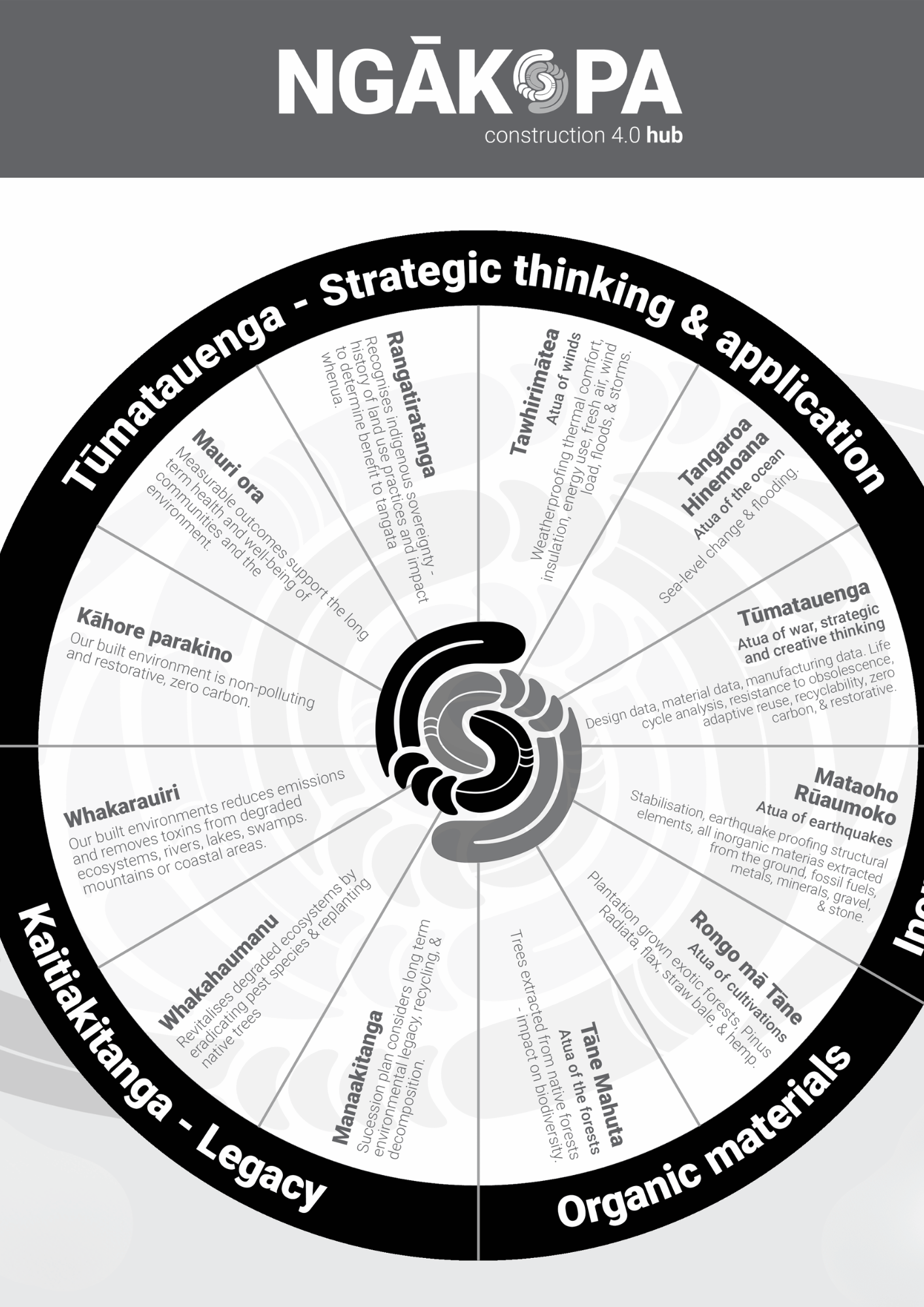| Authors | Fleur Palmer |
| Edition | Framework diagram |
Developed for HERA to support low-carbon circular design – atua most relevant to built environments are identified. They include Papatūānuku and Ranginui, Tūmatauenga (war), Tawhirimātea (weather), Tane Mahuta (forests), Tangaroa/Hinemoana (seas), Haumetikietikie (wild and uncultivated food), Rongo ma Tane (cultivated food), Mataoho/Ruaumoko (earthquakes), among others. The framework recognises that in built environments, there is a connection between ngā mana tangata (people) as decision makers, and ngā ira atua (the sacred realms of multiple ancestors). Atua relevant to the industry include those where materials are either extracted from such as Papatūānuku, Mataoho, Rūaumoko, Rongo mā Tane, Tane Mahuta, or those whose forces bring beneficial outcomes or catastrophic destruction (Tangaroa, Hinemoana, Tawhirimātea)
In the Māori world, environmental systems and phenomena required to sustain the health and well-being of people and all other living and non-living systems are referred to as atua and regarded as ancestors because of their life giving capacity.
The extraction and manufacture of materials and buildings has significant impact on hapū (subtribe) or iwi (tribe) and their atua. This introduction to a Māori worldview considers how advanced technologies will help decision-makers prevent biodiversity loss and reduce the long-term harm to the intricate network of things and living systems Māori atua support.
Māori believe they are connected ancestrally to atua through their whakapapa (genealogy), descending from Papatūānuku (Earth Mother) and Ranginui (Sky Father). Whakapapa identifies the connection Māori have to their whenua (land) and all other resources that maintained the livelihood and hauora (health and well-being) of their hapū or iwi within a particular region (Te Rito, 2007; Mahuika, 2019). When reciting whakapapa, Māori refer to specific mountains, forests, lakes, rivers, and coastal areas where their ancestors maintained strongholds. These places were settled by mana whenua (people with ancestral authority over a territory), because of their access to food reserves, fresh water, fertile growing areas, and other resources required to enable their hapū or iwi to thrive.

